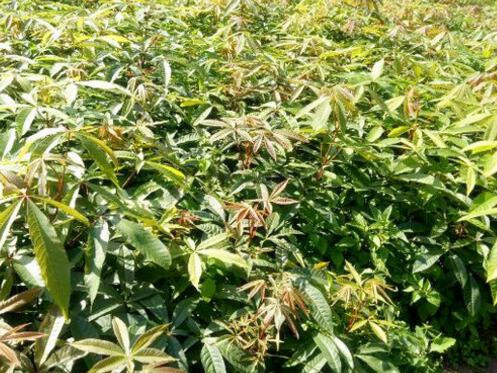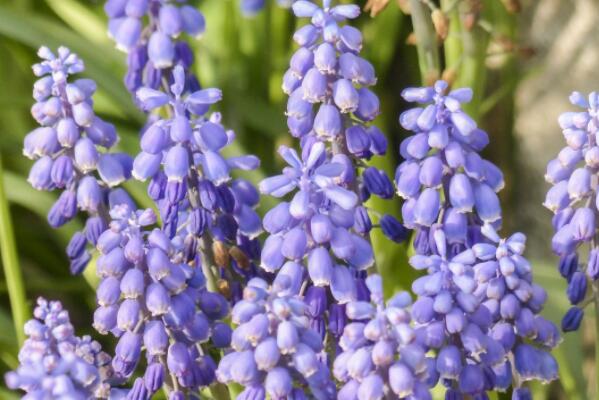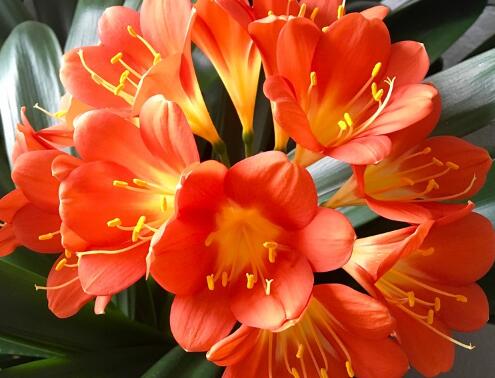How much is the seven-leaf tree? How to plant it? What are the effects and effects?
Buckeye beautiful tree shape, beautiful flowers, fruit shape strange, is a view of leaves, flowers, fruit rare species, one of the world-famous ornamental tree species. So, how much does a buckeye cost? How to grow? What are the effects and functions? It is understood that horse chestnut 5cm, the price is 65 yuan;6cm130 yuan; 7cm 220 yuan; 8cm 380 yuan. Prices vary due to regional specifications and varieties.

How do horse chestnut trees grow?
1. planting pit
Buckeye taproots are deep and lateral roots are few, belonging to tree species that are not resistant to transplantation, so they must be transplanted with soil balls, the diameter of which is 6 to 8 times that of tree DBH. Buckeye planting should be carried out before germination in early spring or after all leaves have fallen off in late autumn. In order to improve the survival rate of planting, the planting pit should be dug as much as possible before planting, which is conducive to the growth of plants. When planting, attention should be paid not to too deep, too deep easy to lead to plant bud, generally speaking, planting depth can be slightly higher than the soil ball epidermis 3 cm to 5 cm. Backfill should be layered and firm when planting.
2. watering
After planting, water should be poured immediately, two times after a week, and three times after 10 days. After three waters, water can be watered according to soil moisture content. Generally, water can be poured once a month. July and August are periods of abundant precipitation. Water can be less or not watered. Water can be poured once in September and October respectively. At the end of November or early December, water can be poured thoroughly. In early March of the next spring, it should be watered enough to thaw water. April and May are spring drought periods. Spring monsoon lasts for a long time, and the wind is strong. The transpiration of plants is relatively large. Therefore, the watering frequency can be increased. It can be watered once every 15 days. Thereafter, it should be watered once a month. Cold water is poured at the end of autumn. The third year is watered according to the method of the second year. From the fourth year onwards, water must be poured five times a year, thawing water in early spring, water before flowering, water after flowering, fruit expansion water and frozen water at the end of autumn. Every watering is very important, and it is necessary to irrigate enough water. In addition, the dry season should also be supplemented in time for water, which is conducive to the growth of plants, can make the crown plump, strong branches.
3. fertilization
Buckeye like fertilizer, so before planting should apply sufficient base fertilizer, base fertilizer to cattle and horse manure, rotten leaf fertilizer and other farm manure is appropriate, although these fertilizers fertility is small, but soft, to improve the porosity of the soil is also good. Base fertilizer should be mixed well with planting soil. Adequate fertilizer can accelerate its growth rate and improve the plant's resistance to pests. In addition to applying base fertilizer at planting time, fertilizer should also be applied throughout the growing season, including some large-sized street trees. Urea can be applied once in the middle of June of the first year of planting. This fertilizer can promote the growth of branches and leaves and increase the nutrient area. In late August, phosphorus and potassium fertilizer can be applied once. This fertilizer can improve the lignification degree of new branches of plants, improve the ability of resistance to freezing injury, and help plants survive safely. In late autumn, combined with pouring frozen water, some semi-decomposed fermented rotten leaf fertilizer can be applied. The fertilizer amount can be large and should be applied shallowly. Urea can be applied once at the beginning of April in the following spring, phosphorus and potassium fertilizer can be applied once in the middle of August, and farm manure can be applied once at the end of autumn according to the method of the previous year. The third year can be fertilized according to the second year method. From the fourth year onwards, the three-element compound fertilizer can be applied once a year in spring, and the farm manure can be applied once in late autumn. This is conducive to accelerating plant growth and safe winter of plants.
4. pruning
The shaping and pruning of horse chestnut should be carried out in winter after annual defoliation or before germination in the following spring. Because the crown of horse chestnut is naturally round head shape, it is better to keep the original crown shape. Plastic pruning is mainly to keep the crown beautiful, ventilation and light transmission as the principle, too dense branches are thinned, too long branches are truncated, so that branches are evenly distributed and grow healthily. Also dry branches, pest branches, bore branches, slender branches and poor growth branches will be cut off, conducive to concentrated supply of nutrients, forming a good crown.
What are the effects and functions of horse chestnut?
1. garden
Buckeye trunk straight, crown big shade thick, early summer flowers full of trees, large white inflorescence and like a gorgeous candlestick, Wei Ran considerable, is an excellent street tree and garden ornamental plants, can be used as pedestrian walkways, parks, squares greening trees, can be planted alone or in groups, or mixed with evergreen trees and broad-leaved trees. In Europe, America, Japan and other places will be horse chestnut trees as street trees, shade trees widely cultivated, North America will be safflower or pink flowers and double-petaled horse chestnut horticultural varieties on both sides of the road, flowers when the scenery is very beautiful.
China often plants buckeye trees alone or in front of buildings and between sparse forests. There are many species of Aesculaceae in China, and they are widely distributed, but most of them are still in the stage of not being properly managed and utilized.
2. pharmaceutical
[Yi Medicine] Zou Pi: Bark bark is used for acute and chronic gastritis, stomach cold pain, Yi Medicine Annals, Chu Yi Materia Medica.
[Mongolian medicine] Daoluoqi-Jimus, Baosuocha, Suluozi: Seed for chest pain, malnutrition, dysentery "Mongolian medicine."
[Miao medicine] fruit used for abdominal pain "Xiang Lan Kao."
Seed (Bora seed): Sweet, warm. regulating qi and relaxing the middle part of the body, harmonizing the stomach and relieving pain. For liver and stomach qi pain, abdominal distension, abdominal pain before menstruation, breast distension, malnutrition and insect pain, dysentery.
3. economic
Buckeye can be used as food, medicine, wood, etc., leaf buds can replace tea, skin, roots can be made soap, leaves, flowers can do dye, seeds can be extracted starch, oil, can also be eaten, taste similar to chestnut, and can be used as medicine, there are sedative, qi, insecticide and other effects. Wood is light in texture and can be used for papermaking, carving, furniture and handicrafts.
Time: 2019-03-20 Click:
- Prev

Can hyacinth, a perennial herb, be put in the bedroom? How much is the seed price per jin? What is the planting method?
Hyacinth, also known as foreign daffodils, western daffodils, colorful daffodils, time sample brocade, is the most fragrant variety of flowering plants found in the study. Can the hyacinth be put in the bedroom? How much is the seed price per jin? What are the planting methods? I learned from Aunt Li, the flower grower.
- Next

How long does the seed of Cymbidium sprout? How much is the price per jin? How to plant it?
Magnolia, also known as Lycoris radiata and Lycoris davidiana, is an ornamental flower of the genus Lycoris of the family Amaryllidaceae. It is native to southern South Africa. It is a perennial herb with a florescence of 30-50 days. So, how long does it take for Cymbidium seeds to sprout? How much is the price per jin? How to plant it? How long does the seed of Cymbidium sprout?
Related
- Fuxing push coffee new agricultural production and marketing class: lack of small-scale processing plants
- Jujube rice field leisure farm deep ploughing Yilan for five years to create a space for organic food and play
- Nongyu Farm-A trial of organic papaya for brave women with advanced technology
- Four points for attention in the prevention and control of diseases and insect pests of edible fungi
- How to add nutrient solution to Edible Fungi
- Is there any good way to control edible fungus mites?
- Open Inoculation Technology of Edible Fungi
- Is there any clever way to use fertilizer for edible fungus in winter?
- What agents are used to kill the pathogens of edible fungi in the mushroom shed?
- Rapid drying of Edible Fungi

